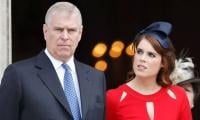China's economy grew faster than expected in the March quarter
The world's second-largest economy grew 5.3 percent in January-March from the year earlier
BEIJING: China's economy grew faster than expected in the first quarter, data showed on Tuesday, offering some relief to officials as they try to shore up growth in the face of protracted weakness in the property sector and mounting local government debt.
However, several March indicators released alongside the gross domestic product data - including property investment, retail sales and industrial output - showed that demand at home remains frail, weighing on overall momentum.
The world's second-largest economy grew 5.3 percent in January-March from the year earlier, official data showed, comfortably above a 4.6percent analysts' forecast in a Reuters poll and up from the 5.2 percent expansion in the previous quarter. On a quarterly basis growth picked up to 1.6 percent from 1.4 percent in the previous three months.
"The strong first-quarter growth figure goes a long way in achieving China’s 'around 5 percent' target for the year," said Harry Murphy Cruise, economist at Moody’s Analytics.Analysts have described as ambitious the growth target Beijing aims to accomplish with help of fiscal and monetary stimulus measures, noting last year's growth rate of 5.2 percent was likely flattered by a rebound from a Covid-hit 2022.
That bounce, however, fizzled away under the weight of the property downturn, rising local debt and weak consumer spending.Beijing turned to the tried and tested spending on infrastructure and high-tech manufacturing to lift the economy. That however, raised concerns about public finances, prompting
WEAK MARCH DATA
While the quarterly GDP data showed the economy was off to a solid start this year, data on exports, consumer inflation, producer prices and bank lending for March showed that momentum could falter again, spurring calls for more economic stimulus.
Disappointing factory output and retail sales, released alongside the GDP report, also underlined the persistent weakness in domestic demand.Industrial output in March grew 4.5 percent from a year earlier, below the 6.0 percent forecast and a gain of 7.0 percent for the January-February period.
Retail sales rose 3.1 percent year-on-year in March, missing the 4.6 percent growth forecast and slowing from a 5.5 percent gain in the January-February period.Fixed asset investment grew an annual 4.5 percent over the first three months of 2024, versus expectations for a 4.1 percent rise. It expanded 4.2 percent in the January-February period.
"The headline number looks good... but I think the momentum is actually quite weak at the end," said Alvin Tan, head of Asia currency strategy at RBC Capital Markets in Singapore.
Prior to the data, analysts polled by Reuters expected China's economy to grow 4.6 percent in 2024, below the official target, but several banks raised their forecasts after the first-quarter numbers.
Economists at ANZ now see China's economy growing 4.9 percent this year, up from 4.2 percent previously, while economists at DBS Bank lifted their 2024 outlook to 5 percent from 4.5 percent.
Societe Generale raised its 2024 growth forecast to 5 percent from 4.7 percent, while Deutsche Bank now expects 5.2 percent growth, half a percentage point above its previous forecast.
CHALLENGES
The crisis in the property sector has been a major drag on China's economy as it has .The March data highlighted the depth of the property sector crisis, which has rippled across the broader economy, hitting business and consumer confidence, investment plans, hiring decisions and stock market performance.
China's new home prices fell at their fastest pace in more than eight years last month. Property investment fell 9.5 percent year-on-year in the first quarter, deepening its slump after a 9.0 percent drop in January-February. Sales tumbled 23.7 percent, compared with a 20.5 percent fall in the first two months of the year.
With the Federal Reserve and other developed economies in no rush to start cutting interest rates, China may also face a longer period of subpar export growth in a further blow to policymakers' hopes of engineering a strong economic recovery.
Adding to the challenge for China, authorities also have to contend with ongoing tensions with the United States over trade, technology and geopolitics.An expected Politburo meeting in April may give clues on Beijing's policy response, though few analysts expect any major stimulus.
While markets expect central bank's pledges to step up policy support for the economy this year to bring further cuts in banks' reserve requirement ratio and interest rates, some analysts warn there is a limit to how much they can accomplish.
They say that more credit is flowing to production than into consumption, reducing the effectiveness of monetary policy tools in stimulating demand and growth"(The) recovery has not got a solid foundation yet as the deep adjustment of real estate market and local government debt overhang still remain the main risks," said Jinyue Dong, senior economist at BBVA research.
-
 Why Royal Lodge Fell Into Disarray Under Andrew: Insider Exposes Loophole
Why Royal Lodge Fell Into Disarray Under Andrew: Insider Exposes Loophole -
 Hoda Kotb 'so Proud' As Today 'magic Reignites' With Sheinelle Jones
Hoda Kotb 'so Proud' As Today 'magic Reignites' With Sheinelle Jones -
 Kate Middleton Avoids Nanny Involvmenet In Prince George Matters
Kate Middleton Avoids Nanny Involvmenet In Prince George Matters -
 Colin Jost Jokes About Scarlett Johansson Losing Highest-grossing Actor Crown To Zoe Saldana
Colin Jost Jokes About Scarlett Johansson Losing Highest-grossing Actor Crown To Zoe Saldana -
 ‘Traitor’ Prince Harry Has ‘spooked’ His Family: ‘He Has To Pay A Price Of Re-entry’
‘Traitor’ Prince Harry Has ‘spooked’ His Family: ‘He Has To Pay A Price Of Re-entry’ -
 Andrew’s Daughter Princess Eugenie Sparks Seismic Change After Stepping Away
Andrew’s Daughter Princess Eugenie Sparks Seismic Change After Stepping Away -
 Meghan Markle Shares NEW Photos From Day Out At The Zoo
Meghan Markle Shares NEW Photos From Day Out At The Zoo -
 'Game Of Thrones' New Series Returns To 'home'
'Game Of Thrones' New Series Returns To 'home' -
 Prince Harry Touches Down In Heathrow For The Witness Box
Prince Harry Touches Down In Heathrow For The Witness Box -
 Harry’s Turmoil Turns To Agony Over Meghan Markle’s Hope: ‘Time Will Tell If He’ll Bare It’
Harry’s Turmoil Turns To Agony Over Meghan Markle’s Hope: ‘Time Will Tell If He’ll Bare It’ -
 Reese Witherspoon Jokes About Jennifer Garner’s 'dark Side'
Reese Witherspoon Jokes About Jennifer Garner’s 'dark Side' -
 'Lion King' Co-director Roger Allers Breathes His Last At 76
'Lion King' Co-director Roger Allers Breathes His Last At 76 -
 Prince Harry’s Security ‘isn’t Just For His Family’: Expert Rewires Security Woe
Prince Harry’s Security ‘isn’t Just For His Family’: Expert Rewires Security Woe -
 Prince Harry Risks Making King Charles Choose Between Queen Camilla And Military Duty
Prince Harry Risks Making King Charles Choose Between Queen Camilla And Military Duty -
 Kate Hudson Jokes She May Write A Script To Star Alongside This Actress
Kate Hudson Jokes She May Write A Script To Star Alongside This Actress -
 Inside How Kate Middleton Stayed Steady Amid Cancer And Royal Chaos
Inside How Kate Middleton Stayed Steady Amid Cancer And Royal Chaos




